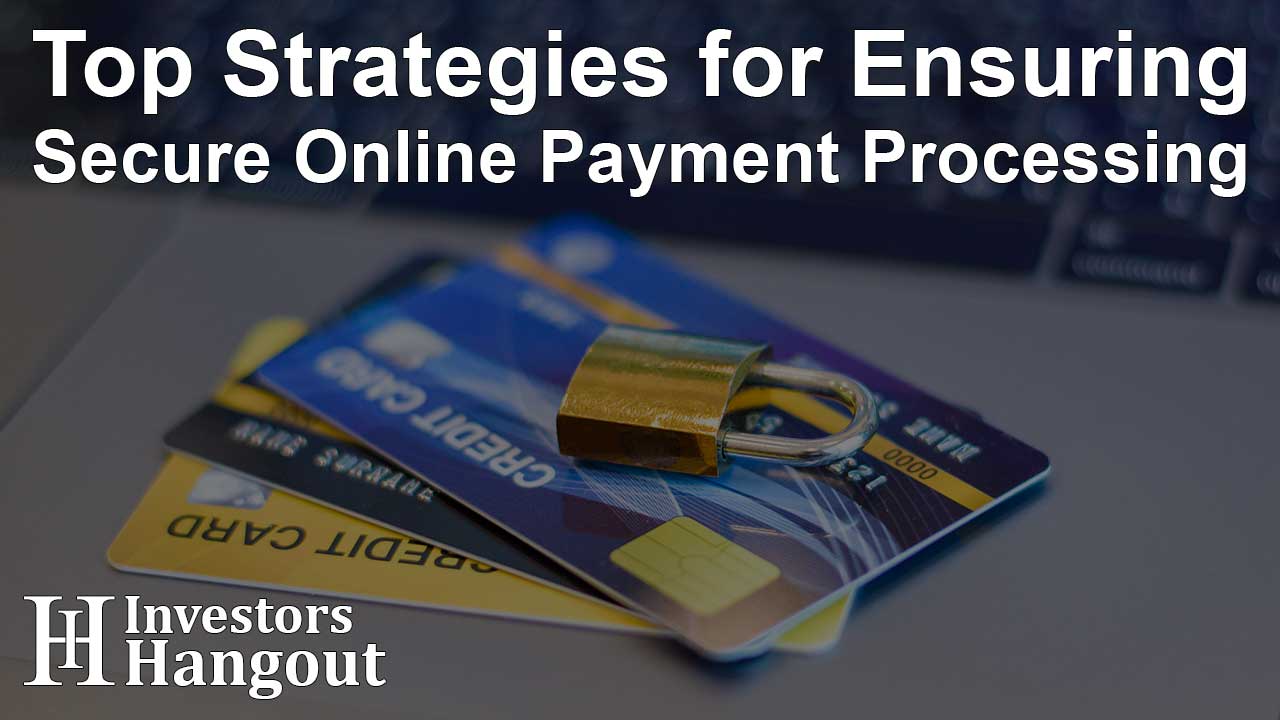Top Strategies for Ensuring Secure Online Payment Processing

Securing Digital Payments for Modern Businesses
When we think of online payments, e-commerce usually comes to mind. But that’s not the case because it has become mainstream for every business including physical retail stores, small service businesses, and other large merchants. In coming years, online payments will completely take over the cash transactions.
Within digital payments, there are multiple methods ranging from credit cards to digital money wallets and the one concern that surrounds all of them is security. Due to this, most of the existing businesses and new ones including ecommerce websites make digital payment security a top priority.
Image Source: Freepik
1. Choose a reliable payment gateway or build one
Payment gateway is one of the best solutions for making secure transactions. Find a reliable gateway that adheres to the PCI-DSS. A secure software system must have a unique design that complies with PCI standards. Doing so helps in the data protection of the cardholder. Make sure you choose a payment gateway that has strong encryption protocols. This feature helps to secure online transactions & payments while transmission and storage. A robust payment gateway protects sensitive data from potential threats. For payment security, business owners must rely on tokenization. This reduces the risk of data breaches.
Building a payment gateway is a simple process if done with the help of experts. Connecting your merchant website to a customer’s bank facilitates online transactions. For this to work out seamlessly, the payment gateway process should be developed with all the necessary features. This work requires expertise. Your entire business depends on how well you manage the finances. Bouncing payments, errors or failures during payments, and the final amount not reflecting in the bank account are some of the common problems merchants face. If you do not know how to build a payment gateway, don’t worry because there are specialist developers at DashDevs to take care of it. The team ensures that everything from the first step where backend payment gateway architecture is planned to the last step where testing and launching are done is up to the mark in every sense.
2. Strong encryption methods
Encryption is an important security tool. It helps to convert the data into an unreadable format. This prevents the sensitive data from getting hacked. A full digital payment security needs a decryption key to access it. The information is locked or stored and no hacker can steal it.
Online transaction security can be maintained by using different methods. Methods like using HTTPs for secure communication lock sensitive data. Secure Socket Layer (SSL) certificates provide encrypted links between servers and web browsers. You must also check if the information stored on servers or other storage devices is safe. You can do it by using various encryption algorithms. Use advanced encryption technologies to prevent finance data from existing and emerging threats.
3. Verification and validation of transaction details
Prepare a system that helps you to identify any unauthorized purchases. This helps in building a digital payment security gateway. The best way to identify a legitimate buyer is to ask for card details like CVV number, or matching the billing address of the buyer with the buyer’s IP address. You can also use a 3D secure system for credit card payments. This type of investigation helps to regulate the transaction. This is a common method that crypto trading and stock market and investment companies use to enable smooth and secure transactions.
A fraudulent buyer will not be able to share all the necessary details. This payment verification process is vital for conducting smooth transactions between two parties. You can use AML and PCI methods to reduce the risk of data breaches and identity theft.
Image Source: Freepik
4. Protecting against vulnerabilities
As digital payments are on the rise, payers and payees need robust data protection. Common vulnerabilities like phishing, card skimming, malware attacks, and identity theft are cyber threats. They are dangerous when it comes to mobile payments. The payment processing security should be designed to safeguard mobile payments. Cashless and faceless transactions are more prone to cause cyberattacks.
Businesses must invest in mobile app security solutions. This will help customers in processing safe monetary transactions. It is a precautionary step that helps to reduce the cost of recovering from a breach. Use 2FA or MFA security measures to get authentication by the user. It guarantees that the money transfer or an online payment is legit. You can also establish a secure connection between the system server and the user’s device. It creates a multi-layered protection and ensures 100 percent payment security. In times when conversational AI has become mainstream, offer methods to customers to get in touch with autoresponders or bots to inform them about suspicious transactions, messages, or calls.
5. Provide advanced training to employees
Educating your employees about what is payment security is a must. Having a good knowledge of different types of phishing attempts and financial frauds increases security in the business.
You can organize seminars or training sessions with experts focused on online payment security methods. This will help to create awareness of data breaches and data security among employees and how transactions can be secured to thwart any possible attacks.
They must learn to handle customer data and take action if they notice suspicious activity. Employees should have expertise in knowing how to make secure payments online on the servers so that they can track customer’s actions in case of any suspicion. They must be thorough with data protection guidelines and keep the data safe from potential threats.
6. Focus on compliance
Following government regulations to protect consumer data helps avoid mistakes that could lead to breaches. The PCI DS in the USA ensures that the sensitive data of an end user is safe and free from any type of cyber threat. These security checks cover all the aspects of payment gateway security. Manual checks help create a level of trust with your client about the safe handling of data.
The main requirements of PCI DS are firewall configuration, strong system passwords, use of antivirus software, and others. Another regulatory requirement of SCA, strong customer authentication ensures customer identification using three ways: one time password (the OTPs), entering PIN codes, and a fingerprint scan.
Conclusion
The transaction processing security holds great importance in times when we keep hearing news about how financial frauds and data breaches are. These dent a company’s reputation and sometimes they even exit the business completely. It’s a serious matter and this is why you should ensure maximum payment gateway security in your business.
About The Author
Contact Owen Jenkins privately here. Or send an email with ATTN: Owen Jenkins as the subject to contact@investorshangout.com.
About Investors Hangout
Investors Hangout is a leading online stock forum for financial discussion and learning, offering a wide range of free tools and resources. It draws in traders of all levels, who exchange market knowledge, investigate trading tactics, and keep an eye on industry developments in real time. Featuring financial articles, stock message boards, quotes, charts, company profiles, and live news updates. Through cooperative learning and a wealth of informational resources, it helps users from novices creating their first portfolios to experts honing their techniques. Join Investors Hangout today: https://investorshangout.com/
